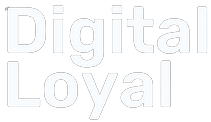Table of content
How to buy a domain name forever is a common question for those looking to establish a lasting online presence. Securing a domain name is one of the first crucial steps in building your online presence. But the concept of owning a domain name “forever” often raises questions. Can you actually buy a domain name forever? While the answer is nuanced, there are ways to ensure you maintain ownership for the long haul. In this article, we’ll explore the steps to buy a domain name and keep it for as long as you need it—effectively, forever.
What Does “Buying a Domain Name Forever” Really Mean?
The term “buying a domain name forever” is a bit of a misnomer. Domain names are typically rented rather than purchased outright. You register a domain name for a specified period—usually between 1 to 10 years—after which you must renew it. However, with strategic planning and the right tools, you can ensure your domain remains yours indefinitely.
Step-by-Step Guide on How to Buy a Domain Name Forever
1. Choose a Reputable Domain Registrar
Before you can buy a domain name, you need to find a domain registrar, a company that manages the reservation of internet domain names. Some of the most popular registrars include:
- GoDaddy: One of the largest and most well-known domain registrars, offering a variety of services.
- Namecheap: Known for affordability and excellent customer support.
- Google Domains: Provides a simple interface and integrates seamlessly with Google services.
When selecting a registrar, check their renewal policies and additional features, such as auto-renewal and privacy protection, which are crucial for long-term domain ownership.
2. Search for Your Desired Domain Name
Once you’ve chosen a registrar, it’s time to search for your desired domain name. Use the search bar on the registrar’s website to check the availability of the domain. If your preferred name is already taken, consider alternatives such as:
- Using a different top-level domain (TLD) like .net or .org.
- Adding a location or business descriptor (e.g., “newyorkwebdesign.com”).
3. Opt for the Longest Registration Period
When registering your domain, select the maximum number of years available (usually up to 10 years). This ensures you won’t have to worry about renewals for a long time, giving you peace of mind. Some registrars also offer discounts for longer registration periods, making it a cost-effective option.
4. Enable Auto-Renewal for Future Security
To make sure your domain never accidentally expires, enable the auto-renewal feature. This will automatically renew your domain registration when it’s set to expire, charging your credit card or payment method on file.
Many registrars also send reminders before the renewal date, giving you an additional layer of security.
5. Consider Domain Registration with Hosting Plans
Some web hosting companies offer free domain registration as part of their hosting plans. If you’re planning to build a website, this could be a convenient and economical way to secure both your domain and hosting.
However, keep in mind that when bundled with hosting, the domain may only be free for the first year, after which standard renewal rates apply.
6. Invest in Domain Privacy Protection
Domain privacy protection is an add-on service that hides your personal details (such as name, email, and phone number) from the public WHOIS database. Without this, your information is publicly visible, leaving you vulnerable to spam or even domain theft.
Most registrars offer this service at a small annual fee. If you’re serious about maintaining long-term ownership, this is a valuable investment.
7. Monitor Domain Expiration Dates
Even if you enable auto-renewal, it’s important to monitor your domain expiration dates. Set reminders on your calendar or use the tools provided by your domain registrar. Staying aware of when your domain is due for renewal can help prevent lapses in registration.
8. Transfer Your Domain If Necessary
If you’re unhappy with your current registrar, you have the option to transfer your domain to another company. Most registrars allow this process, but they may have specific rules regarding how and when you can do so. Keep in mind that transferring a domain typically comes with an additional registration period, so it’s a good opportunity to extend ownership further.
How to Prevent Domain Loss: Key Strategies
Use a Reliable Payment Method
Make sure your payment information is always up-to-date. If your credit card expires or your payment fails, auto-renewal won’t go through, risking the loss of your domain.
Back-Up Your Website and Data
Though domain registration is crucial, it’s only part of the equation. Regularly backing up your website and data ensures that even if something happens with your domain, your hard work won’t be lost.
Renew Early for Additional Security
While auto-renewal is an excellent feature, it’s wise to renew your domain manually before the expiration date as an extra precaution. Some registrars allow early renewals at any time, extending your registration period.
External Resources to Learn More About Domain Ownership
- ICANN: Domain Name Basics – Learn about the organization responsible for managing domain names and their policies.
- GoDaddy Guide to Domain Ownership – A comprehensive guide on securing and maintaining a domain name.
- Namecheap’s Auto-Renewal Options – Learn how to set up auto-renewal for your domain.
Conclusion: Safeguard Your Domain Name for the Long Haul
While you can’t technically “buy a domain name forever,” you can take steps to ensure you maintain ownership for as long as you need it. By selecting a reliable registrar, opting for long-term registration, enabling auto-renewal, and investing in privacy protection, you can secure your domain indefinitely.
So, take control of your digital presence today—your future self will thank you for it.


